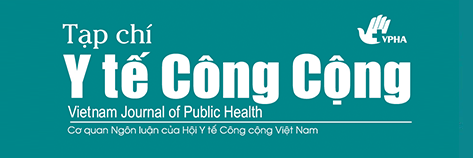Traditional medicine: More effective services in rural areas
Abstract
Rural areas in Vietnam encompass 9,068 communes, which are the lowest territorial and administrative units in the country where 60.7 million people (67.67% of total population) reside1-3. Despite a remarkable development in the past decades, these areas are still economically and socially disadvantaged. A rural inhabitant’s income per capita GDP is low: 1,124 USD/year, i.e. about half of the nationwide 2,109 USD/year and far less than that of the urban one4. Moreover, poor and ethnic minorities live mostly in rural areas. While the poverty rate for households nationwide is 4.5-5%, the poverty rate in rural areas is about 8.2%5.
Vietnam’s health system is organized into central, provincial, district and commune levels. Almost all hospitals and clinics belong to the first three levels and are located in cities or towns. The nearest commune district hospitals are usually small and the number of their beds account for only 36% of total hospital beds. At the commune level, health stations (CHSs) are only state-owned health facilities. The ratios of medical doctors, nurses and midwives per 10,000 inhabitants in rural areas are apparently very low at 1.3, 2.3 and 1.9, respectively. Whereas those numbers in urban areas are much higher at 17.5, 25.5 and 5.56.
Such distributions of medical facilities and staff are evidently unfavorable for rural dwellers whose opportunities to access to full and qualified health services are very limited, namely because: (i) The hospitals are located tens to hundreds of kilometers far away from their homes and are often overcrowded. The CHS’s capacitis are very limited due to lack of medical equipment and highly qualified medical workers (only 76% of CHSs have doctors). Therefore, these CHSs can provide only preliminary and simple medical services as first aid, temporary or emergency treatment for simple cases and midwife services. In cases beyond capacity, patients are subject to being transferred to the district or higher level hospitals. (ii) Due to financial constraints, most rural inhabitants find it burdensome to go to these hospitals, as the transportation and communication infrastructure is still poor. These issues are one of the main reasons of inequity between rural and urban people in accessing quality health services7,8.
Keywords
Full Text:
PDFReferences
Vietnam General Statistics Office. Statistics Yearbooks 2013 Hanoi: General Statistics Office (Vietnam); 2013.
Vietnam General Statistics Office. Statistics Yearbooks 2014 Hanoi: General Statistics Office (Vietnam); 2014.
Total Population of Vietnam. http://data.worldbank.org/indicator/SP.POP.TOTL; 2014. Accessed 10/Feb/2015.
GDP per capita (current US$). http://data.worldbank.org/indicator/NY.GDP.PCAP.CD; 2014. Accessed 10/Feb/2015.
Vietnam Government office. Evaluation report on implementation the National target programs: Vietnam Government office,;2015.
Vietnam Ministry of Health. Health Statistics Yearbooks 2013 Hanoi: General Statistics Office (Vietnam); 2013.
Tran TK, C. T. Nguyen, H. D. Nguyen, B. Eriksson, G. Bondjers, K. Gottval, H. Ascher, and M. Petzold,. Urban-rural disparities in antenatal care utilization: a study of two cohorts of pregnant women in Vietnam BMC Health Services Research 2011;11:120.
Tuan T, V. T. Dung, I. Neu, and M. J. Dibley,. Comparative quality of private and public health services in rural Vietnam Health Policy Plan 2005;20(5):319-27.
Vietnam Ministry of Health HPG. Joint Annual Health Review (JAHR) 2009: Human resources for health, JAHR, 2009: Vietnam Ministry of Health;2009.
Vietnam Ministry of Health HPG. Joint Annual Health Review (JAHR) 2013: Toward to Universal Health Coverage. Available at http://jahr.org.vn/downloads/JAHR2013/JAHR2013_Final_EN.pdf: Vietnam Ministry of Health;2013.
Vietnam Prime Minister. Decision No. 2166/QĐ-TTG Promulgation of the Government action plan for development of traditional medicine in Vietnam to 2020. . In: office VPM, ed2010.



